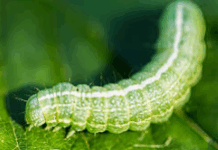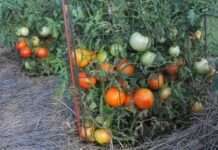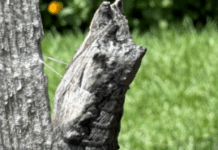IN THE GARDEN for September 2015 by Justin Evertson, Nebraska Statewide Arboretum
“The question is always asked by the curious travelers who have crossed the Plains at Interstate speeds, ‘How can you live here without the mountains, the ocean, the woods?’ But what they are really speaking to is their desire to ‘get it’ right away. The sublime of this place that we call the prairie is one of patience and looking. There is no quick fix… If one is to understand the beauty of this place, the old answers just won’t do.”
Keith Jacobshagen in The Changing Prairie
Over the years I have grown to love prairie and have come to believe that we need to include more of it in our planted landscapes. And yet I have to admit that prairie is not necessarily the easiest thing to love. For many people it’s an acquired taste. Perhaps it’s in our DNA, a leftover trait carried forward from our ancient past, but the prairie just doesn’t seem to call to us like other landscapes do. Where do we camp or build shelter? Typically it’s in or near the woods where the trees can help protect us from the elements. Out on the prairie we become exposed without much protection offered from even the tallest bluestems or sunflowers. And perhaps there’s an ancient instinct rattling in our brains warning us that out on the prairie is where a large animal might take us for a meal.
Judging by the common names given to many of our prairie plants, early settlers didn’t think much of the prairie either. Smartweed, ironweed, locoweed, rosinweed, snakeweed, milkweed, sneezeweed, gumweed and soapweed were just some of the weedy names given to native plants. And there were other uninspired monikers—fleabane, sandwort, spiderwort, ragwort, scurfpea and dogbane. Prairie was a foreign concept to these early settlers who came from the more wooded areas of the eastern U.S.
Love of prairie doesn’t always come quickly. It takes a little work. But if we take the time to explore it, we can see how incredibly dynamic and biodiverse it is. How its color, texture and mood change dramatically from season to season and year to year. And we can see how beneficial it is to building soil, to filtering and holding water and to sustaining the web of life, including us humans. If we open our eyes properly, the prairie can become deeply rooted within us, inspiring us to preserve and expand it wherever we can.
Homeowners and municipalities are beginning to realize the resiliency and benefits of prairie landscapes, while at the same time accepting that many of these tough prairie plants are not easily controlled and subdued. And there are good reasons to love it—substantial economic and scientific reasons as well as less quantifiable ones. Here are just a few:
- Pollination. Prairies provide essential food and shelter for native pollinators—bees, wasps, beetles, flies and butterflies—and aboveground shelter year-round when other vegetation has been removed.
- Adaptability. Most prairie plants can survive extreme dry as well as wet conditions. As climate patterns become increasingly dramatic, prairie vegetation is more likely to survive extreme weather events than other plants.
- Carbon sequestration. Native plants work much better than traditional mowed grass as a carbon sink due to their extensive root systems and capacity for retaining and storing water.
- Biodiversity gives a landscape stability over the long run and few landscapes are as diverse as prairie.
- Education and inspiration. Prairies offer educational opportunities, inspiration, open space and nature exposure for all ages.
- Grazing and hay production. Prairie grasses have high nutritional value for livestock and hay production.
- Suppression of pest insects. Prairie insects are natural enemies to many pest insects, reducing the need and cost for pesticides or other costly management.
- Prairie biofuels and biomass. The energy-dense structure of these plants can be burned or converted into fuels that may become increasingly important as other fuels prove unsustainable or damaging.
- Soil enrichment. Their roots concentrate organic matter in the top 2-3 feet of soil, making it fertile, porous and desirable for food production and agriculture.
- Prevent erosion. The root systems of prairie grasses can grow 6-8 feet deep or more so they can hold soils even on very steep inclines and prevent reservoirs from filling up with sediment.
- Water conservation. Prairie plants can survive long periods of dry weather. Some die back and grow only when water sources are rejuvenated. Even if aboveground growth is damaged, their roots store energy for regrowth, increase water absorption and help recharge groundwater supplies.
- Water quality. Prairie grasses are capable of taking up harmful and toxic buildup of fertilizer, pesticides and herbicides before they contaminate waterways, streams and lakes.
- Air quality. Prairies require minimal mowing or other traditional forms of lawn care, drastically reducing harmful emissions from gas-powered mowers, edgers, leaf blowers, etc.
So do yourself a favor and make room in your landscape for some fascinating native prairie plants. Start with native grasses that laugh at heat and drought—little bluestem, sideoats grama, switchgrass, Indiangrass and prairie dropseed. Then weave in prairie flowers that can range from 6” sprawling plants to 8’ tall. A few to consider are purple coneflower, Mexican hat, Missouri primrose, butterfly milkweed, aromatic aster, purple prairie clover, leadplant, false sunflower, rattlesnake master, dwarf blue indigo, goldenrod, mountain mint and even one called wild quinine. We promise you’ll come to love it, right along with the myriad of pollinators, butterflies, other beneficial insects and birds that will benefit from your efforts.
Nebraska Forest Service & Nebraska Statewide Arboretum




